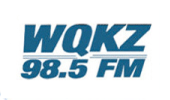Patoka Sportsman 10-9-21
Patoka Sportsman 10-9 & 10-10-21
In 2020, the number of deer harvested in individual counties ranged from 128 in Benton County to 3,116 in Noble County (Table 3-2). Total harvest exceeded 1,000 deer in 60 counties and 2,000 deer in 14 counties. Comparatively, antlered buck harvest exceeded 1,000 in 10 counties while the antlerless harvest exceeded 1,000 in 23 counties. Antlerless deer accounted for at least 50% of the total harvest in 84 of the state’s 92 counties in 2020.
In Dubois County 838 antlered deer were harvested along with 1,143 antlerless for a total of 1,981. Martin County reported 677 antlered deer and 849 antlerless for a total of 1,526. Pike County had 759 antlered deer and 1,013 or 1,772 total deer harvested. Perry county had 774 antlered and 808 antlerless for a total count of 1,582. Crawford County had a total of 1,678 deer taken. Daviess County had a total of 1,225. 1,288 deer were taken in Spencer County.
In 2020, 132,966 individual hunters purchased an annual deer hunting license of some kind. An increase of 6.52% from 2019. The number of deer licenses sold to those hunters increased by 6.0% from 2019. As a result, the number of deer legally allowed to be harvested on those licenses, excluding youth was 10.0% greater than in 2019. Each deer license bundle included three deer privileges. Both the number of hunters purchasing a license and the number of licenses sold steadily declined from 2015 to 2019. The increase in 2020 numbers may be a result of increased time and resources due to Covid 19 and or stimulus money.
There’s a lot more information in the 2020 Indiana White-tailed Deer Report. It can be found here: https://www.in.gov/dnr/fish-and-wildlife/files/fw-deer-summary-report-2020.pdf
October is here and with it comes the start of deer archery season. The changing leaves and cooler temperatures make October a beautiful time to be in the woods. Deer behavior changes in a big way during this time, with bucks beginning to mark their territories with rubs and scrapes. Look for these signs while scouting to help you determine where deer are moving in your area.
Plan to buy your deer hunting license early and check that you can log into your Access Indiana account. Don’t risk delays due to potential technical difficulties. If you typically buy your license at a store near you, skip the long lines the day before your hunt and buy now. Find a list of license retailers online at the DNR’s website. Check your license for accuracy before you leave the store. Interested in harvesting multiple deer or hunting across multiple seasons? Consider buying a deer license bundle, which allows you to harvest up to three deer (only one may be antlered) during the Archery, Firearms, and Muzzleloader seasons. Remember, the resident youth consolidated hunt/trap license includes all deer hunting privileges.
Have questions about deer seasons or regulations? Contact our Deer Hotline by emailing [email protected] or calling 812-334-3795, 8:30 a.m. to 4 p.m. ET, Monday through Friday.
With the ongoing ammo shortage, we know hunters are having trouble finding non-toxic shot to take advantage of dove and waterfowl hunting seasons. Non-toxic shot is required for dove hunting on DNR properties by state law, and federal law requires the use of non-toxic shot for waterfowl hunting across the country.
Both laws are intended to protect the species from the accidental ingestion of lead. On Fish & Wildlife properties, specific fields are set aside for hunters to use for dove hunting, and these fields encourage birds to feed on the ground. When several hunters shoot in the same direction in the same area over time, this causes an accumulation of shot on the ground where birds often feed. Using non-toxic shot protects doves while providing hunters with ample opportunity to hunt them over the fields they’re attracted to.
Now is the time to bring home your family’s Thanksgiving turkey. The fall archery wild turkey season is open in all Indiana counties from Oct. 1–31. Many counties also offer a fall firearms wild turkey season from Oct. 20–31. Purchase your fall wild turkey license and game bird habitat stamp online or at participating retailers.
The bag and possession limit for the fall seasons is one bird of either sex, regardless of hunting equipment used or what portion of the season you will be hunting. For a full list of wild turkey regulations, pick up a copy of the Indiana Hunting & Trapping Guide from our Fish & Wildlife areas, or find regulations online. Visit Indiana’s Where to Hunt map to find possible hunting opportunities around the state. Turkey hunting in the fall is also a great time to prepare for deer season by scouting areas where you can hunt both game species.
The Indiana CheckIN Game system allows hunters and trappers to register ("check in") their harvested game from any device connected to the internet. You will receive a confirmation number that must be written down on a temporary transportation tag for the harvested game species (turkey, deer). Be sure to check your information to ensure accuracy before submitting. Deer and wild turkeys must be checked in within 48 hours of harvest; river otters must be checked in within 24 hours of harvest. Have your Customer ID and harvest information ready. Remember, you don’t need to log in to your account to check in game – you can do so by clicking CheckIN Game and entering your Customer ID number and date of birth.
Hunters still have the option of visiting traditional check stations where a confirmation number will be provided for you to place on your temporary transportation tag. There is also a phone-in option at 1-800-419-1326; however, there is a $3 charge for this service (payable by Visa or MasterCard only).
CheckIN Game data filters into real-time harvest tables available on the DNR website. Check harvest numbers for white-tailed deer, wild turkey, and river otter, updated daily during open seasons.
Tree stands are a helpful tool during deer season, but it’s important to follow safe practices every time you use them. Falls from elevated hunting positions are the No. 1 cause of hunting incidents in Indiana. The most important step you can take to have a safe season is to use a full-body harness that is secured to the tree or a tree stand safety rope. Stay connected and use your harness system from the time you leave the ground, throughout your hunt, and until you descend back down.
Indiana hunters are encouraged to donate harvested deer to help feed hungry Hoosiers during the upcoming seasons. The Sportsmen’s Benevolence Fund administered by the DNR Law Enforcement Division provides grants to Hoosiers Feeding the Hungry, Dubois County Sportsmen Club, and Hunters and Farmers Feeding the Hungry to pay for processing fees when hunters donate legally harvested deer. Locally hunters can take deer to Sanders Processing in Celestine and Cannelberg Processing.
Fall is the time for colorful leaves and frosty mornings – it’s also one of the best times for prescribed fire. Landowners and habitat managers often take advantage of the fall weather to conduct prescribed fire for many reasons, including improving wildlife habitat and managing invasive plant species.
Prescribed fire can be used to prepare an area for prairie grasses and wildflowers by providing better seed-to-soil contact, which promotes better seed growth. Depending on the timing, prescribed fire can also enhance existing native grasses by thinning out old material, opening up space for wildflowers essential to pollinators, or knocking back more aggressive maple and beech saplings for nut-generating hickories and oaks. Fire can also control invasive species and provide a greater diversity of favorable plants for many kinds of wildlife, from squirrels and songbirds to Northern bobwhite and turkey.
Prescribed fire is one of many tools used to establish or enhance habitat; however, a certain level of knowledge and skill is needed before planning a burn. Learn more about prescribed fire on our website. Get in contact with your district wildlife biologist if prescribed burning sounds like a good habitat management option for your property.




